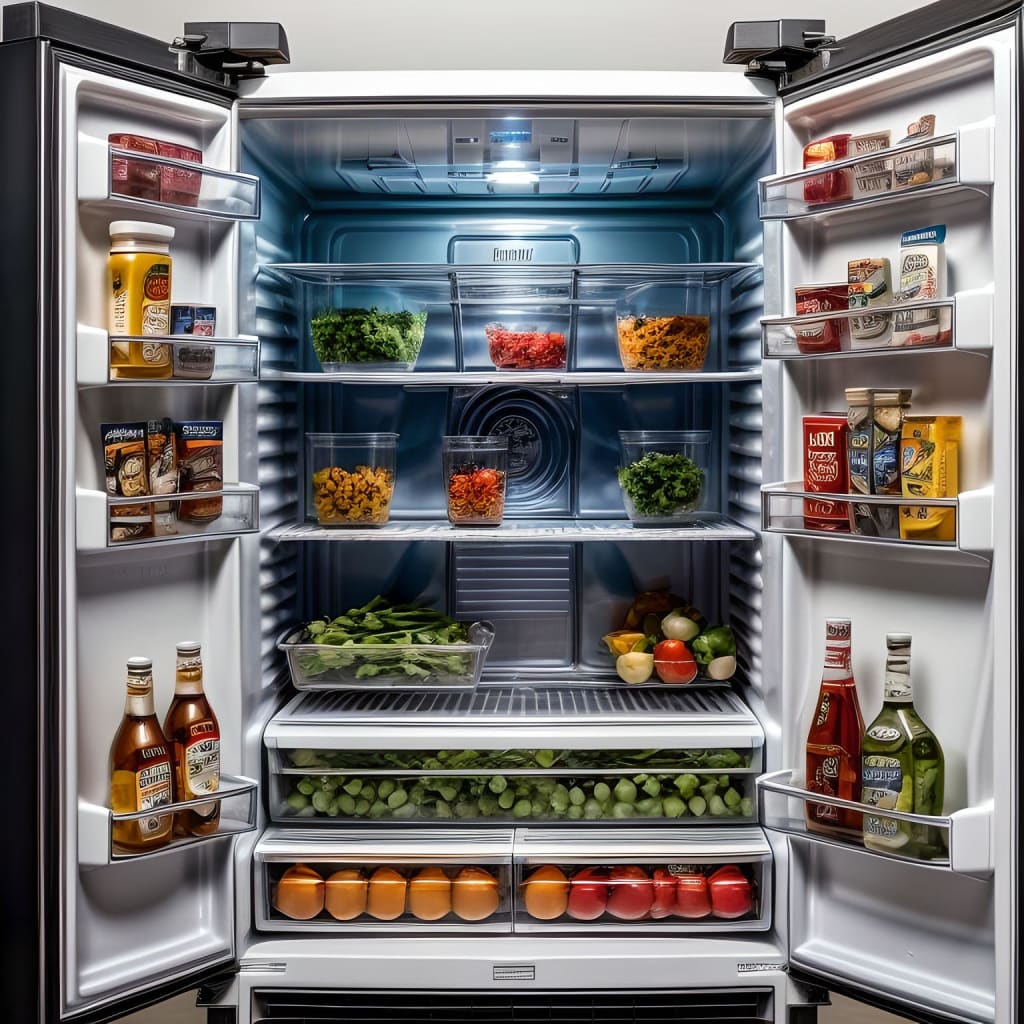Foods You Believed Should Be Refrigerated but Actually Shouldn't
by Kirk Moon

Storing oils in the refrigerator can lead to an unusual cloudy texture, especially with olive and coconut oils, which solidify in colder temperatures. Keeping olive oil in the fridge is generally discouraged in the culinary world. Refrigerators tend to be damp and humid with condensation, which is not ideal for preserving the quality of these oils. Chilling olive oil can significantly impact its flavor and texture. Coconut oil's consistency depends on the climate; it solidifies in colder temperatures. To prolong its shelf life and maintain its smooth texture, it's best to store coconut oil in a cool, dark place like your pantry. If you've mistakenly placed olive or coconut oil in the fridge and it has solidified, don't panic. Simply take it out, and it should return to its normal liquid state at room temperature.
On the other hand, nut and seed oils are exceptions and should be stored in the refrigerator because they are more prone to oxidation and spoilage. Surprisingly, butter doesn't always need to be refrigerated. In many cases, it can be left out of the fridge, making it easier to spread. However, if you live in a hot climate, refrigeration may be necessary, but ensure it's not too cold. Always keep your butter covered and in a cool area away from direct sunlight, like a cupboard.
Cold storage can also affect the quality of certain fruits and vegetables. Tomatoes, for instance, can lose their flavor and become dull when refrigerated. They're best kept at room temperature, such as on your kitchen counter. If you need to slow down tomato ripening, you can place them in the fridge, but if they become overly ripe, consider making a delicious roasted tomato sauce.
Ketchup, with its natural acidity, is resistant to spoilage by microorganisms, so avoid refrigerating it too much to enhance its flavor. Similarly, whole melons, like watermelons, are tastiest when stored at room temperature to retain their flavor and juiciness. After cutting a melon, you can refrigerate the remaining pieces in cling wrap for a few days.
When it comes to herbs, like coriander and mint, store them in the crisper, loosely wrapped in absorbent material. This prevents them from absorbing unwanted fridge odors. However, basil and parsley are exceptions. Refrigeration can cause their leaves to wilt and discolor. Instead, cut the stems' bottoms and place them in a jar with a small amount of water for prolonged freshness.
Uncut onions are best stored in a dark, dry area outside the refrigerator, as humidity in the fridge can make them moldy and mushy. If you cut an onion, place it in a resealable bag in the vegetable drawer, away from foods that can be affected by their strong aroma.
Cucumbers are often stored in the vegetable crisper, but they actually taste best when kept at room temperature. Cold temperatures can damage them, so store cucumbers in your pantry, away from apples and bananas, to prolong their crispness.
Peanut butter can be kept in the pantry for several months after opening, retaining its familiar texture and easy spreadability. Refrigeration is an option for extending its shelf life, but it will harden, making it more challenging to spread.
Honey has a tendency to crystallize in cold temperatures, so keep it at room temperature to maintain its gooey consistency. Store it in a cool, dark place, ideally in its original container, which provides an excellent seal to keep it fresh and keep ants at bay.
Hot sauces do not require refrigeration due to their high vinegar and salt content, which prevents spoilage. Room temperature storage enhances the heat of the peppers, which is why most people buy hot sauces in the first place.
The creamy goodness of avocados is best enjoyed when they are kept out of the fridge. Refrigeration halts the ripening process, so store them on your kitchen counter. If you want to expedite ripening, place avocados in a brown paper bag with a banana for a few days. The banana releases ethylene gas, which speeds up ripening, ensuring you have ripe avocados for guacamole.
Ground or whole bean coffee should not be refrigerated, even in an airtight container, as coffee tends to absorb odors and moisture, affecting its flavor. Instead, store your coffee in a dark, cool place, such as your pantry, away from sunlight and moisture. If you choose to freeze coffee, use an airtight container in small batches to prevent moisture from compromising its quality.
Full bulbs of garlic should be stored in a cool, dry place like your pantry. Avoid sealing them in a container without ventilation, as this can lead to mold growth. Proper storage will ensure your garlic remains fresh for several months.
Morning rituals vary, and the foods you choose to start your day can set the tone. Some foods are best avoided on an empty stomach. For instance, raw bananas, rich in magnesium, may lead to digestive issues when consumed in the morning. However, mixing them with oatmeal can create a protective lining in the stomach, preventing irritation from hydrochloric acid.
While a crispy croissant might seem like a tempting breakfast choice, pastries and baked goods with yeast can irritate the stomach lining when eaten on an empty stomach. Consider opting for sourdough or whole-grain bread instead, which provides carbohydrates essential for a balanced diet.
Citrus juices, while visually appealing, can be too rich in fructose when consumed on an empty stomach, potentially causing digestive discomfort. It's better to have citrus fruits after eating something else to avoid disrupting your metabolism. Papaya or watermelon can be gentler morning fruit choices, aiding in detoxification and providing a lighter start to your day.
Raw vegetables, like those in salads, are not ideal for consumption on an empty stomach due to their coarse fibers, which can be challenging to digest. Save your salad for later in the day when your stomach is more prepared.
Drinking a glass of warm water in the morning can be beneficial for your digestive system, preparing it for the day ahead. However, avoid cold beverages on an empty stomach, as they can damage the stomach's mucous membrane, potentially causing discomfort.
Coffee lovers should refrain from drinking coffee on an empty stomach, as it stimulates the secretion of hydrochloric acid, which can harm the digestive system. It's advisable to consume coffee at least an hour after waking up and after having a light meal.
Dairy products like yogurt and milk can negatively affect the good bacteria in your stomach when consumed on an empty stomach. Opt for fermented milk products like kefir or cheese, as they provide healthy fats and are less likely to disrupt your gut flora.
While chocolate and protein bars are convenient, high-sugar foods should be avoided on an empty stomach. However, a small amount of high-quality dark chocolate can boost your mood, thanks to its ability to stimulate the production of mood-enhancing hormones.
Spicy foods, such as chili with jalapenos, may not be the best choice for breakfast, as they can irritate the stomach lining when consumed on an empty stomach. Consider milder options for your morning meal to avoid discomfort.
In the fast food world, there are some secrets that may surprise you. For instance, the enticing aroma you smell upon entering a bakery or fast food establishment is often intentionally created by baking sheets coated with cinnamon and brown sugar. This scent is designed to attract customers and stimulate their appetites.
Color plays a significant role in fast food marketing. Warm colors are
commonly used in logos, branding, and interior design because they trigger hunger and grab customers' attention.
Convenience is a major factor in fast food's appeal. The quick and easy access to food is addictive, making it a popular choice for many. Fast food companies capitalize on this convenience to keep customers coming back.
Upsizing and pricing strategies are used to encourage customers to order more food than they initially intended. The use of numbers and pricing formats can lead customers to choose larger portions without realizing it.
Fast food companies often use chemicals to enhance the taste and aroma of their products. These additives compensate for the loss of flavor during processing.
The packaging of fast food items, such as burger wrappers, can contain harmful chemicals like fluorine. These chemicals can migrate into the food and pose health risks.
Drive-throughs employ various techniques, such as license plate recognition and cameras, to streamline the ordering process and encourage customers to make quick choices.
In some fast food chains, employees can see customers through cameras at the drive-through, allowing them to interact and take orders more efficiently.
Fast food companies use tactics like pre-made grill lines on meat to create the appearance of freshly grilled items, even if they aren't cooked on a grill.
Processed sugars are often added to fast food products to enhance flavor, making them highly processed and less healthy.
Ultimately, understanding these fast food industry tactics can help consumers make more informed choices when dining out. It's essential to be aware of the marketing and pricing strategies used and to make choices that align with your health and dietary preferences.





Comments (1)
Very well written and informative!